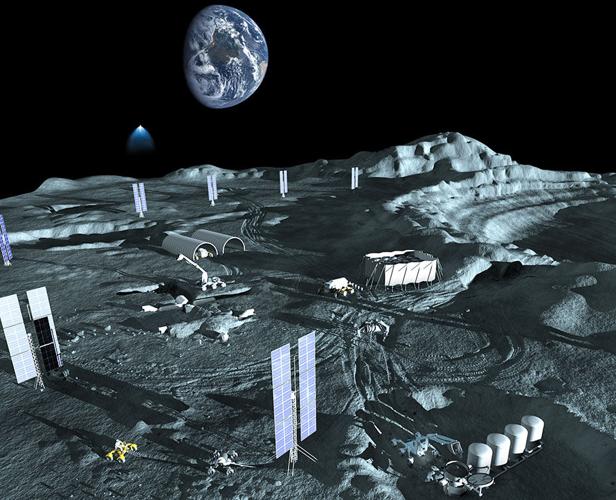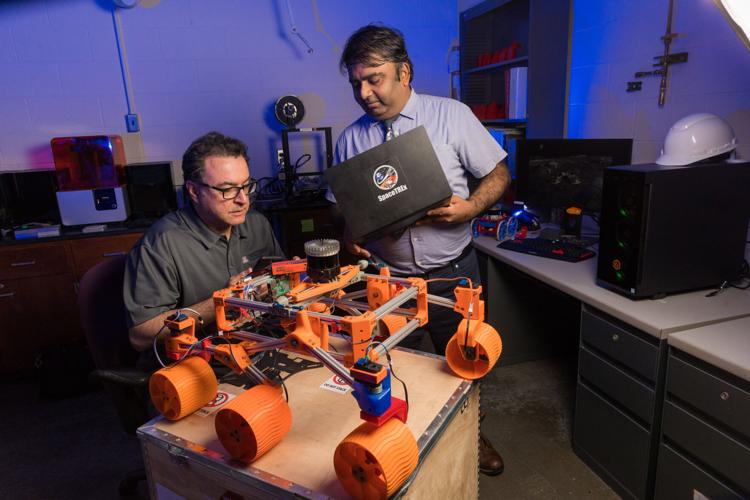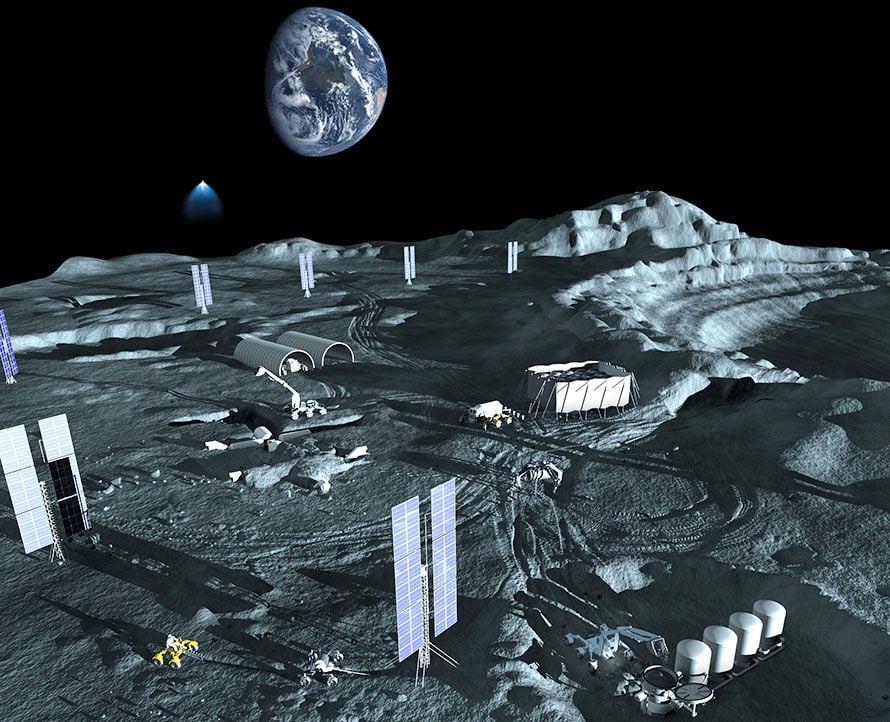When astronauts finally return to the moon for the first time since 1972, they could discover that all the good mining jobs have already been snatched up by robots.
A team of University of Arizona researchers and engineers has received $500,000 from NASA to develop space-mining techniques using swarms of autonomous machines.
“There’s a first time for everything,” said Moe Momayez, interim head of the UA’s Department of Mining and Geological Engineering. “You never know until you try.”
If humans ever get serious about setting up a permanent base on the moon, Momayez said, it probably makes more sense to fabricate building materials on site rather than to fly everything there from 283,900 miles away.
Scientists believe the lunar surface could contain enough titanium, aluminum, gold, platinum, rare earth elements and other materials to produce metal alloys, electronic devices and fuel for nuclear reactors.
“There’s actually a lot of resources on the moon,” Momayez said.
Researchers envision a fully independent team of robots that won’t need instructions from Earth to break rocks, harvest and process ore or even build things out of it. The robots would be trained to work together and improve their collaborative skills over time.
“In a sense, we’re like farmers. We’re breeding talent out of these creatures, or a whole family of creatures, to do certain tasks,” said Jekan Thanga, an associate professor of aerospace and mechanical engineering, in a written statement. “By going through this process, we help perfect these artificial creatures whose job it is to do the mining tasks.”
The machines are not meant to replace humans so much as protect them and free them up for other, less tedious work that doesn’t lend itself to automation.
“The idea is to have the robots build, set things up and do all the dirty, boring, dangerous stuff, so the astronauts can do the more interesting stuff,” Thanga said.
You may remember Thanga’s name from another sci-fi-sounding idea involving the moon.
A few months ago, he and his students presented conceptual plans for a lunar ark filled with cryogenically frozen seeds, spores, sperm and egg samples from millions of Earth species. They suggested the facility could be built inside existing underground caverns on the moon and serve as a backup copy of sorts for our planet’s biodiversity in the event of global catastrophe.

University of Arizona engineering faculty members Moe Momayez, left, and Jekan Thanga have received $500,000 in NASA funding for a new project to advance space-mining methods using swarms of autonomous robots. They are shown with a low-cost, rapidly designed, 3D-printed rover prototype for testing sensors for use in lunar mining.
Momayez insists mining on the moon is not as far-fetched as it sounds. He said he would not be surprised to see small robots hunting for mineral deposits on the lunar surface within a decade.
Though he thinks most of what gets mined there will likely be used in construction on the moon, it might make financial sense to bring certain rare minerals back to Earth.
To make large-scale extraction work, though, researchers will either have to invent entirely new mining methods or develop a way to produce significant amounts of water and oxygen, two key ingredients used at terrestrial mines.
“We’ll have to go step by step and solve these challenges,” said Momayez, who also serves as the David & Edith Lowell Chair in Mining and Geological Engineering.
The good news: Whatever new techniques they come up with are likely to be useful for the mining industry on Earth as well, he said.
The funding from NASA came through the space agency’s Minority University Research and Education Project Space Technology Artemis Research Initiative.
The UA qualified for the money because of its status as a Hispanic Serving Institution, a designation granted by the U.S. Department of Education to colleges and universities where Hispanic students make up 25% or more of the total undergraduate enrollment.
Momayez and Thanga plan to use the funding to add a space-mining category to an existing, NASA-funded undergraduate program that allows students to spend a year leading their own research projects.
Momayez said he is excited to learn right along with the students, as they develop both the autonomous robots and the mining techniques the robots might use.
He said that work will take place in the classroom, the laboratory and at the San Xavier Mine, south of Tucson, where the university owns and operates the nation’s only underground mining lab with a working vertical shaft.
But is mining the moon even legal?
Though several attempts were made in the 1960s and 1970s to craft an international treaty for such things, the question of ownership and exploitation of celestial bodies remains unsettled.
Momayez admits he is no expert in intergalactic law, but it is his understanding that the moon and its resources are there for the taking by whomever gets there first.
“I think it’s open field,” he said. “It’s the Wild West.”






